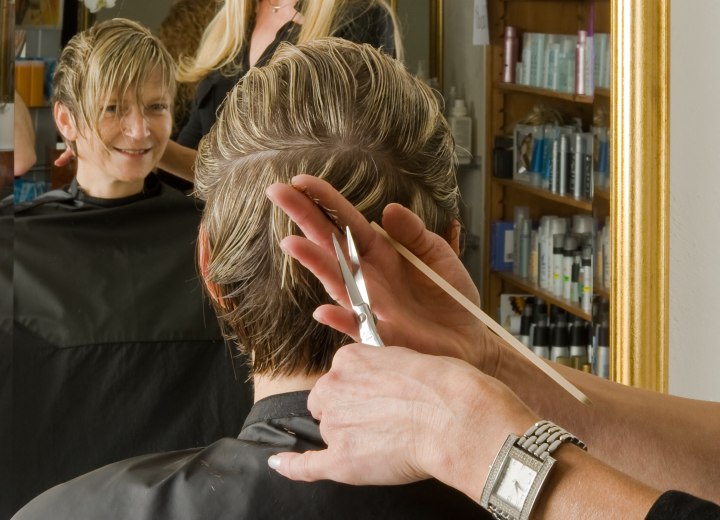Paneling Technique

The technique gets its name from the way it creates distinct "panels" or sections of hair that appear to move independently from one another. Think of it like architectural paneling on a wall, where each section has its own defined edge and dimension. When done correctly, these panels create incredible movement and texture that responds beautifully to natural head movement and styling.
Here's how the paneling process actually works: The stylist sections off the hair and lifts the top layer away from the head. Instead of cutting this top layer shorter as you would in traditional layering, they leave it longer and focus on cutting the underneath sections progressively shorter and at more angular, geometric angles. This creates a graduated effect where the longest pieces sit on top, with shorter, more textured pieces nestled beneath them.
The magic happens when the top layer falls back into place. Because the underneath sections are cut shorter and at strategic angles, they push up against the longer top layer, creating natural lift and volume without the need for excessive teasing or product. The shorter underneath pieces also peek through the longer top layer, creating visual interest and dimension that changes as you move your head or style your hair differently.
This technique is particularly effective for people with fine to medium hair texture who want to add body and movement without creating excessive bulk. However, it requires careful consideration of hair density and natural growth patterns. When the description mentions that thick hair can end up looking like a mullet, it's referring to what happens when paneling is applied incorrectly to very dense hair. Without proper weight removal and strategic placement, the contrast between the longer top sections and shorter underneath pieces can create an uneven, disconnected appearance reminiscent of an unintentional mullet.

Stylists often use paneling as a way to give clients the best of both worlds, especially for those who need to maintain a professional appearance for work but want something more adventurous for their personal time. The technique allows for dramatic transformation simply through different styling approaches, making it practical for people with varied lifestyle demands.
When considering paneling, it's essential to work with a stylist who truly understands the technique, as it requires precision and an eye for geometric cutting. The angular nature of the cuts and the reverse layering approach demand technical skill and experience to execute properly.
©Hairfinder.com
See also:
Can you explain the terms square, round, concave, and convex layers?
How to cut jagged layers
How to cut uniform layers